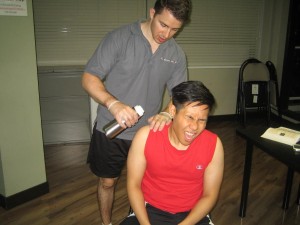The symptoms of a scald or burn tend to vary on the severity of the injury. In some cases of minor burns, it can cause a lot of pain while some cases of major burns do not seem to hurt at all. If you want to handle burns properly, click here.
Symptoms of a scald or burn
- Reddish skin
- Formation of blisters
- Peeling skin
- Swelling
- White or charred skin
Take note that the degree of pain felt by an individual who sustained a burn depends on the severity of the burn.
The severity of the burn depends on the extent of damage on the skin layers. The skin is the largest organ in the body and acts as a barrier to the environment. It is comprised of three layers – epidermis, dermis and subcutaneous fat. Minor burns only involve the epidermis but in severe burns, the damage can reach to subcutaneous layer of the skin which contains the large blood vessels and nerves.
What are the types of burns?

Burns are categorized on the severity of damage caused. There are four types of burns that have their own symptoms that you should be familiar with.
- Superficial epidermal burns involve damage to the epidermis. The skin is red in color, slightly swollen and painful but there are not blisters present.
- Superficial dermal burns involve the epidermis and part of the dermis. The skin is pale pink in color and painful. There are small-sized blisters present on the affected area.
- Deep dermal/partial thickness burns involve the epidermis and dermis. With this type of burn, the skin turns red and becomes mottled in appearance. The skin is either dry or moist and becomes swollen and blistered. As for the pain, it can be intense or there is no pain.
- Full thickness burns involves all the three layers of skin. The skin is burnt away and the underlying tissues look pale or blackened. The remaining skin is dry and can either be white, black or brown without any blisters. The texture of the skin can become waxy or leathery.
If the scald or burn is mild, it can be treated at home since it normally heals without further treatment. While the skin heals, the affected area must be kept clean at all times and avoid applying any cream or greasy substances. Do not open up or pop the blisters since it can lead to an infection.
In case the interior of the mouth is scalded by drinking hot liquids, it is important to avoid things that can irritate the scalded area. The individual must avoid hot and spicy food, smoking or drinking alcohol until the affected area completely heals. Take note that minor scalds or burns that affects the epidermis typically heals in a week without any scarring.
